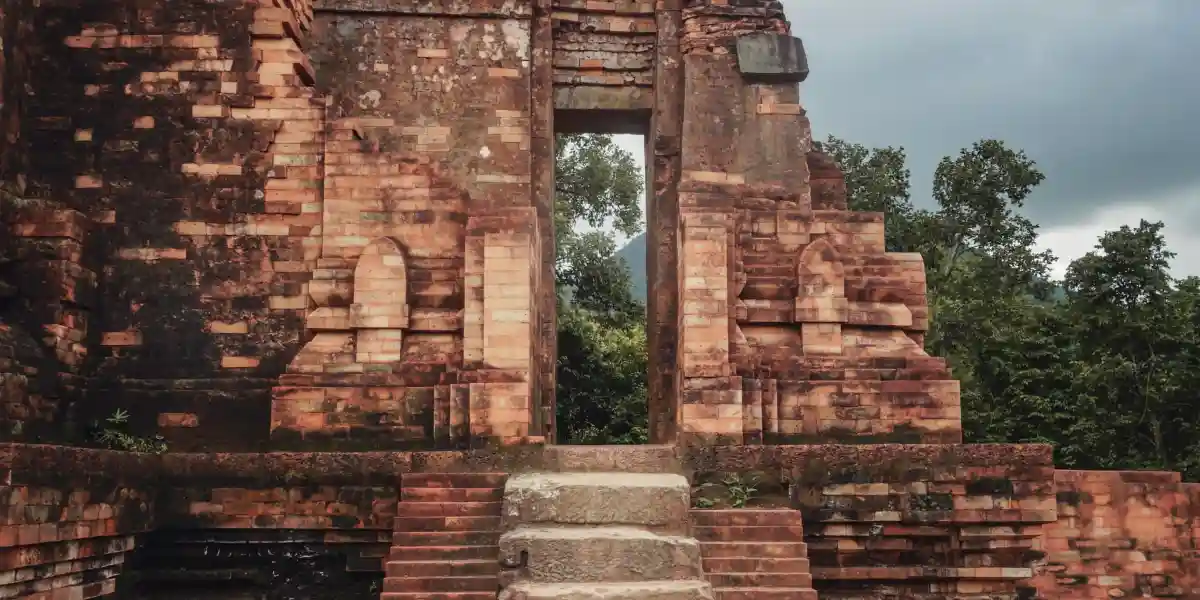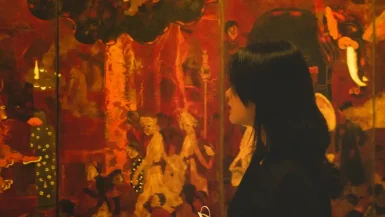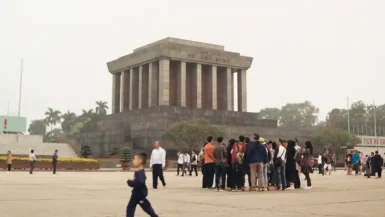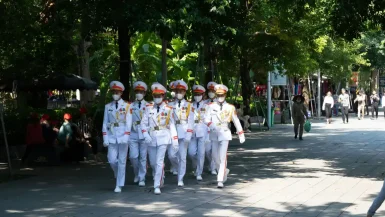The Cham civilization, a fascinating part of Vietnam’s history, thrived between the 2nd and 17th centuries. This ancient civilization rooted in Indian culture and heavily influenced by Hinduism and later Islam. They left an indelible mark on Vietnam’s cultural and architectural landscape. When you travel through central Vietnam, particularly in areas like Quang Nam, Phan Rang, and Binh Thuan, you’ll encounter the remnants of this once-powerful kingdom. The Cham civilization is a crucial piece of the puzzle that is Vietnam’s rich cultural tapestry. Exploration of this culture offers a unique glimpse into the country’s diverse history.
The Origins of the Cham Civilization
The Cham civilization originated from the Kingdom of Champa, which was established in present-day Central Vietnam. This kingdom was one of Southeast Asia’s earliest Hindu states, drawing significant influence from Indian civilization. Champa’s roots can be traced back to the Sa Huynh culture, which existed around 1000 BCE. The Cham people, who are believed to be the descendants of the Sa Huynh, built their society around coastal trade, agriculture, and their deep religious beliefs.
The strategic location of Champa along the central coast of Vietnam provided the Cham people with access to vital maritime trade routes, connecting them to other powerful civilizations across Southeast Asia and beyond. These connections facilitated the exchange of goods, ideas, and cultural practices, further enriching the Cham civilization. The influence of Indian civilization, particularly through the spread of Hinduism, profoundly shaped Cham society, religion, and art. The adoption of Sanskrit as a sacred language and the construction of Hindu temples dedicated to deities such as Shiva and Vishnu underscored this cultural synthesis.
As traders and seafarers, the Cham people played a key role in the regional economy, acting as intermediaries in the exchange of luxury goods like spices, silks, and ceramics between China, India, and the Indonesian archipelago. The wealth generated from this trade not only supported the kingdom’s economy but also allowed for the construction of grand architectural projects. The buildings reflected the Cham’s devotion to their gods and their desire to demonstrate their power and sophistication. The integration of agriculture with coastal trade created a balanced and sustainable economy, enabling the Cham civilization to thrive for several centuries. This combination of religious devotion, economic prowess, and cultural adaptability was the cornerstone of the Cham civilization’s enduring legacy in Vietnam’s history.
Economic activities
The strategic location of the Cham civilization along the coast allowed it to become a major hub for maritime trade, linking India, China, and the rest of Southeast Asia. This vibrant trade network not only brought wealth but also introduced new cultural and religious ideas to the Cham people. As a result, the Cham civilization became a melting pot of different influences, blending indigenous traditions with those from India and other trading partners. The Cham society was organized into several city-states, each ruled by its own king, which often collaborated or competed with one another for dominance.
Agriculture
Agriculture, particularly rice cultivation, was the backbone of the Cham economy, supplemented by fishing and the trade of valuable goods such as spices, sandalwood, and textiles. The Cham people developed advanced irrigation systems to support their agricultural activities, which allowed them to sustain a large population. The prosperity of the Cham civilization was also reflected in its artistic and architectural achievements, with temples, towers, and sculptures that showcased their craftsmanship and religious devotion.
The Cham’s agricultural success was largely due to their innovative use of water management techniques.It was including the construction of reservoirs and canals that ensured a stable water supply for their rice fields. This efficient system of irrigation not only boosted crop yields but also allowed the Cham civilization to flourish economically. The surplus of agricultural products facilitated trade with neighboring regions, further enhancing the wealth and influence of the Cham people.
In addition to rice, the Cham cultivated a variety of other crops such as millet, beans, and fruits, which diversified their diet and supported their growing population. Their fishing industry, concentrated along the coast, provided a steady supply of seafood. It was a staple in the Cham diet and an important trade commodity. The abundance of natural resources, combined with their strategic location along key trade routes, positioned the Cham civilization as a significant economic power in Southeast Asia.
The wealth generated from agriculture and trade enabled the Cham to invest in grand architectural projects. As a result they created some of the most iconic monuments in Vietnam. These structures not only served religious purposes but also symbolized the prosperity and power of the Cham civilization, leaving a lasting legacy that continues to inspire admiration today.
Social structure
The Cham civilization’s social structure was hierarchical. The king and his court were at the top, followed by priests, warriors, merchants, and farmers. This structure ensured the smooth functioning of the kingdom and maintained social order. The Cham kings were not only revered as rulers but were also seen as divine figures. They were often depicted in temple carvings as incarnations of the gods they worshipped. The strong connection between religion and governance helped to legitimize the authority of the Cham rulers and reinforced the cultural cohesion of the civilization.
The priests played a crucial role in the Cham society, acting as intermediaries between the gods and the people, and performing vital religious ceremonies. The Cham people consider those ceremonies a prosperity symbol of the kingdom. Warriors defended the kingdom’s borders and played an essential role in maintaining the kingdom’s power and influence over surrounding regions. Merchants, benefiting from the Cham’s strategic position along trade routes, accumulated wealth by trading goods like spices, textiles, and precious stones, contributing to the economic vitality of the kingdom.
Farmers, who made up the majority of the population, were the backbone of Cham society, producing the food and raw materials that sustained the entire civilization. Despite their lower social standing, farmers were vital to the kingdom’s stability and prosperity. The clearly defined roles within the Cham social hierarchy created a stable society. In the Cham society each class contributed to the kingdom’s overall success. This social order, deeply intertwined with religious beliefs, helped maintain harmony and cohesion within the Cham civilization, ensuring its survival and prosperity over the centuries. The reverence for kings, combined with the organized social structure, played a key role in the Cham civilization’s endurance, even in the face of external threats and internal challenges.
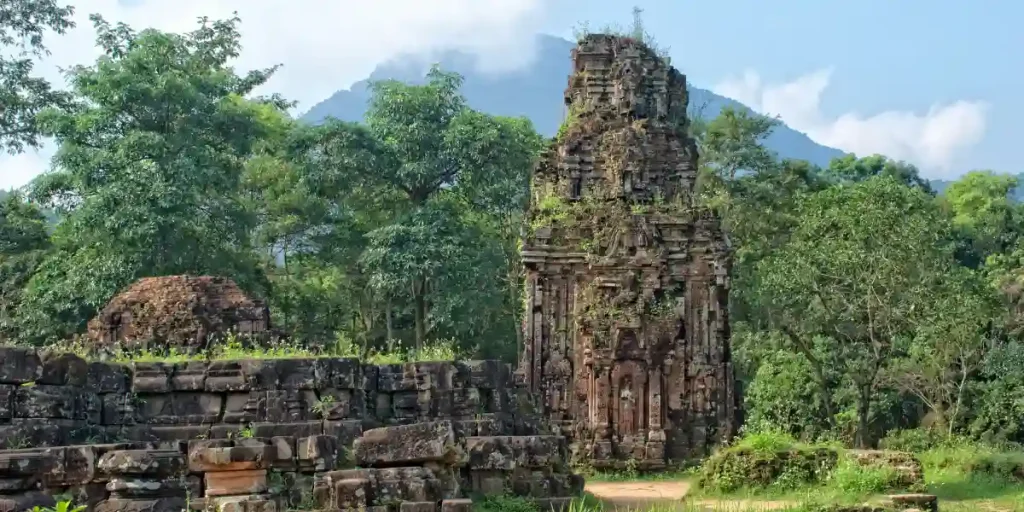
The Flourishing of Cham Culture
The Cham civilization reached its zenith between the 7th and 10th centuries. This period is prominent by the construction of grand temples and monuments. These architectural marvels, such as the My Son Sanctuary, are now UNESCO World Heritage sites and serve as testament to the Cham’s advanced engineering and artistic skills. My Son, often referred to as Vietnam’s Angkor Wat, was the religious and political center of the Cham civilization. This site is a must-visit for anyone who wants to know more about the Cham civilization.
The My Son Sanctuary comprises a complex of Hindu temples dedicated to Shiva, the destroyer in the Hindu trinity. These temples were built using bricks and sandstone, with intricate carvings depicting Hindu myths and legends. The Cham artisans perfected a unique method of bricklaying. It involved laying bricks without mortar, a technique that has puzzled historians and architects alike. The temples at My Son showcase the Cham civilization’s mastery of sculpture and architecture.
In addition to their architectural prowess, the Cham people were also prominent for their exquisite craftsmanship. They created beautiful works of art, including pottery, textiles, and jewelry, many of which featured Hindu and Buddhist motifs. The Cham civilization was also famous for its music and dance, particularly the Apsara dance. They used to perform in temples during religious ceremonies. This dance, which has survived to this day, is a vital part of the Cham cultural heritage.
Religious Evolution and Diversity
While Hinduism was the dominant religion of the Cham civilization, Buddhism also played a significant role in its spiritual life. By the 10th century, Mahayana Buddhism began to influence the Cham. It led to the construction of Buddhist temples and the creation of statues depicting the Buddha. The coexistence of Hinduism and Buddhism within the Cham civilization is a remarkable example of religious tolerance and syncretism.
The Cham civilization’s religious landscape underwent a significant transformation in the 15th century with the arrival of Islam. Islam gradually became the dominant religion in certain Cham communities, particularly in the southern regions of Champa. Today, the Cham people are predominantly Muslim, with a smaller number still practicing Hinduism. The Cham civilization’s religious diversity is one of its most distinctive features. The religion reflects the long history of cultural exchange and adaptation.
The Decline of the Cham Civilization
The Cham civilization began to decline in the 15th century, largely due to external pressures and internal strife. The rise of the Vietnamese kingdoms to the north, particularly the Đại Việt, posed a significant threat to Champa’s sovereignty. The Đại Việt conducted several military campaigns against Champa, gradually annexing its territories and weakening the Cham civilization.
One of the most significant events in the decline of the Cham civilization was the fall of Vijaya, the Cham capital, in 1471. The Đại Việt army captured Vijaya after a brutal siege. The event caused the deaths of tens of thousands of Cham people and the destruction of the city’s infrastructure. This event marked the beginning of the end for the Cham civilization, as it lost its political and economic power.
Despite this decline, the Cham civilization’s cultural and religious legacy continued to thrive, albeit on a smaller scale. Many Cham people fled to neighboring regions, including Cambodia and Malaysia, where they established new communities and preserved their cultural traditions. In Vietnam, the remaining Cham people continued to practice their religion and maintain their distinct cultural identity.
The Legacy of the Cham Civilization in Modern Vietnam
Today, the Cham civilization’s legacy can be seen in the many architectural and cultural landmarks scattered across Vietnam. Sites like the My Son Sanctuary, Po Klong Garai Temple, and the Po Nagar Cham Towers in Nha Trang are significant tourist attractions, drawing visitors from around the world.
The Cham people, though a minority in modern Vietnam, continue to preserve their unique cultural identity. They celebrate traditional festivals, such as the Kate Festival. The festival honors their ancestors and the deities of their Hindu and Islamic faiths. The Cham also continue to practice traditional crafts, such as weaving and pottery.
The Cham civilization’s influence extends beyond Vietnam’s borders, as well. Cham art, architecture, and religious practices have left an indelible mark on Southeast Asia’s cultural landscape. The Cham’s maritime trade connections helped spread their cultural influence to other parts of the region. It includs Indonesia, Malaysia, and the Philippines. Today, Cham communities can be found in these countries, where they continue to maintain their cultural heritage.
Why the Cham Civilization Matters Today
Understanding the Cham civilization is crucial for anyone interested in Vietnam’s history and culture. The Cham civilization is a testament to the country’s rich and diverse heritage. It’s reflecting a complex interplay of indigenous and foreign influences. The Cham people’s resilience in the face of adversity, their ability to adapt to changing circumstances, and their commitment to preserving their cultural identity are all lessons that resonate in today’s world.
For travelers, exploring the remnants of the Cham civilization offers a unique opportunity to connect with Vietnam’s past. Visiting sites like My Son, Po Klong Garai, and Po Nagar provides a deeper appreciation of the Cham civilization’s contributions to Vietnam’s cultural landscape. These sites are living symbols of a civilization that, despite its decline, continues to inspire and captivate.
In conclusion, the Cham civilization is an integral part of Vietnam’s history. It’s important to explore and celebrate. By learning about the Cham civilization, you gain a deeper understanding of Vietnam’s cultural diversity. Whether you’re a history buff, an architecture enthusiast, or simply a curious traveler, the Cham civilization offers a fascinating journey into Vietnam’s rich and complex past.
